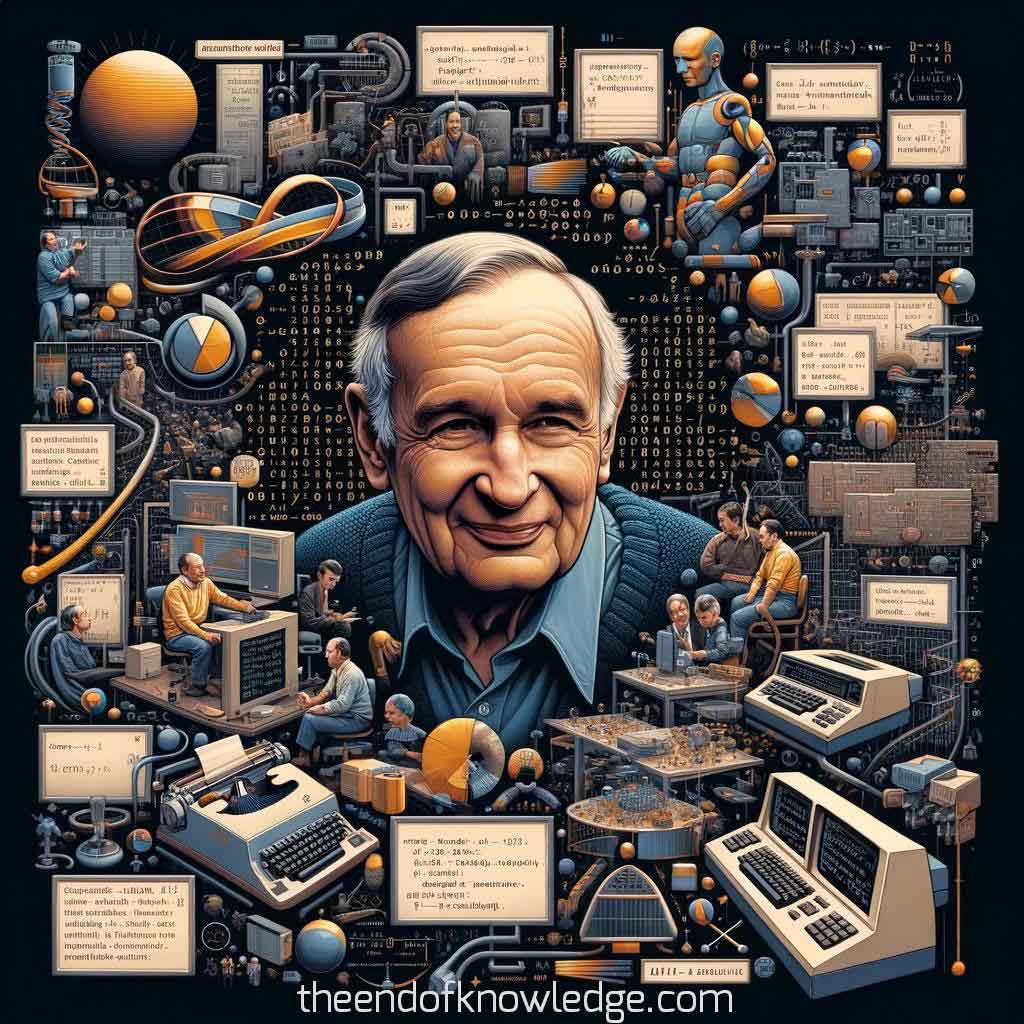 >
>
Concept Graph (using Gemini Ultra + Claude3):
Custom ChatGPT resume of the OpenAI Whisper transcription:
1.- Knuth's early fascination with computing grew from hands-on experience with the IBM 650 in 1957 – its size, memory, and punch cards made a lasting impression.
2.- He's continually surprised by computing's evolution, finding it impossible to predict long-term trends.
3.- Writing is vital to Knuth's creative process: typing and revising refine his ideas, underscoring the importance of iterative writing.
4.- Synthesis is a source of joy – he loves connecting ideas, especially when people were working in isolation.
5.- Dead ends are inevitable in research. Knuth shares his example of scrapping a major project on baseball due to limited generalizability.
6.- "Art" in *The Art of Computer Programming* refers to the human-made, elegant, and joyful aspects of programming.
7.- Discovering Boolean Decision Diagrams (BDDs) was transformative: it deeply changed how he viewed what computers can do.
8.- Knuth favors practical solutions over those only focused on theoretical worst-case scenarios.
9.- He discussed asymptotic notation's importance in algorithm analysis (a concept he helped popularize) for broader performance understanding.
10.- On P vs. NP, Knuth suggests even if P=NP, practical solutions might remain elusive due to complexity.
11.- Knuth's writing process involves drafting on paper, then typing/revising for clarity and rhythm.
12.- He finds inspiration in synthesizing ideas, especially from those who weren't aware of each other's work.
13.- Dead ends are inevitable; he emphasizes practicality and willingness to pivot from projects that lack broader insights.
14.- Programming has artistic aspects where elegance and problem-solving meet, requiring both skill and creative insight.
15.- Boolean Decision Diagrams (BDDs) were a revelation, changing his understanding of Boolean functions.
16.- He prefers algorithms working well in practice over those only addressing theoretical extremes.
17.- Asymptotic notation is core to algorithm analysis: it lets us compare efficiency without needing every detail.
18.- Also On P vs. NP: even if they're equal, Knuth doubts it means "all" problems then become easily solvable.
19.- Knuth discussed his work on TeX, a typesetting system crucial for scientific and mathematical documents.
20.- He emphasizes the joy in synthesizing ideas from seemingly unconnected sources.
21.- Discoveries like BDDs show the dynamic nature of computer science – they can fundamentally alter our assumptions.
22.- Knuth prefers practical solutions that work well in real-world applications.
23.- Programming is an art for Knuth, where elegance, creativity, and problem-solving intersect.
24.- He candidly discusses the necessity of abandoning or revising unproductive projects in research.
25.- Knuth's TeX typesetting system demonstrates his interest in the visual, aesthetic side of presenting scientific work.
26.- He discusses his perspective again on the P vs. NP problem, connecting theoretical concepts with their real-world implications.
27.- Knuth shares insights into his philosophical approach to life, mortality, and how he finds fulfillment.
28.- He reflects on his legacy, including unfinished work like "The Art of Computer Programming and a musical composition.
29.- The interview ends with Knuth's thoughts on the limits of knowledge and the endless joy of discovery.
Interview byLex Fridman| Custom GPT and Knowledge Vault built byDavid Vivancos 2024